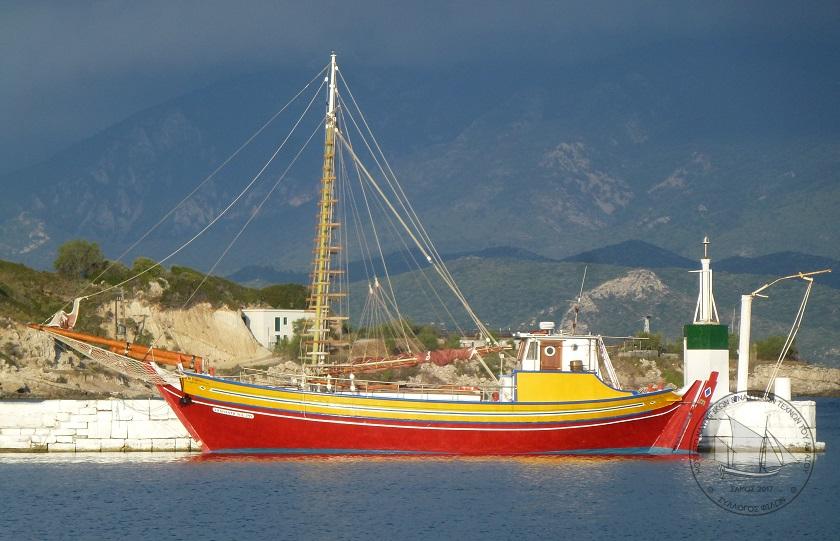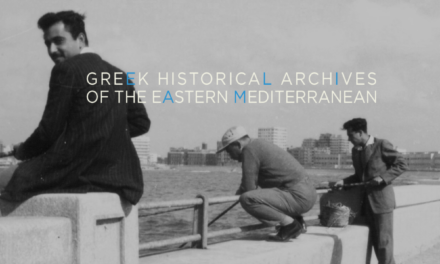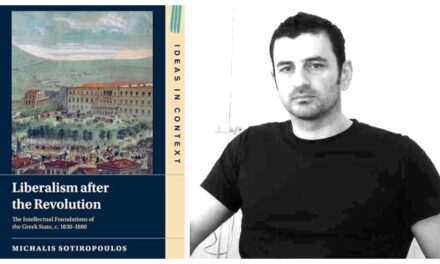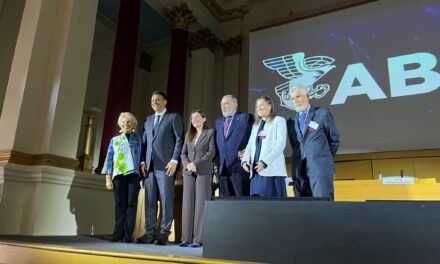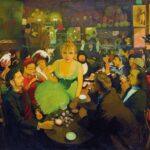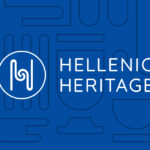The craft of building wooden boats is a living tradition that has been practiced across all Greece and through all historical periods. In the past it was one of the most prominent expressions of the maritime societies’ technology and craftsmanship with unique technical, typological and cultural characteristics, some of which date back to the Middle Ages and the Byzantine Times. There were many variations, or even different traditions, of boatbuilding that are linked tosea areas, lakes, rivers and lagoons.
The craft’s transmission from one generation to the next took place through empirical apprenticeship, which entails younger people learning the craft by working side by side with a master craftsman. Today empirical apprenticeship is still the only means of learning the craft. he Craft of Wooden Shipbuilding has been listed in the National Inventory of Intangible Cultural Heritage
of Greece.
As Katerina Velentza writes in her paper on Traditional Shipbuilding on the Island of Samos: “Traditional boats, as tangible cultural heritage assets, and the practice of wooden shipbuilding, as a traditional craft and intangible heritage, are expressions of local knowledge of the Aegean Sea communities.
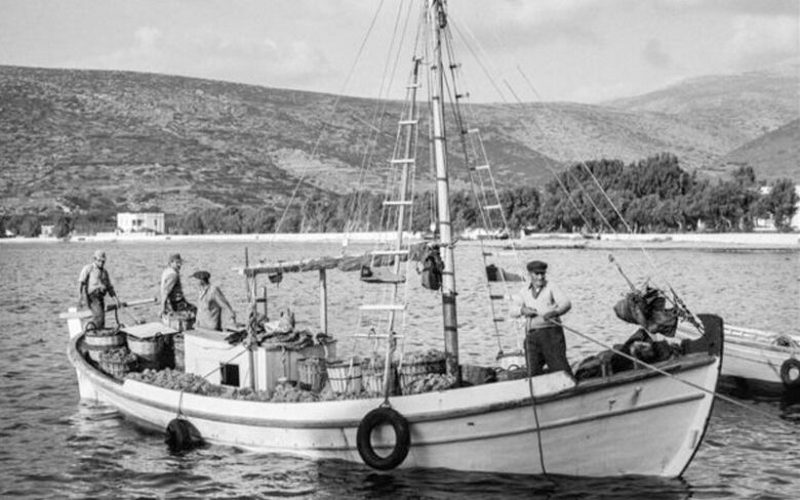
For the Aegean Sea islanders, their attachment to the sea, their insular environment, as well as the availability of particular material resources, such as certain species of timber, resulted in the development of specific types of wooden watercraft and methods of shipbuilding that evolved through several centuries of human interactions with the surrounding natural environment.
The traditional wooden boats, known as kaikia (καΐκια in Greek, καΐκι in singular), were established technologically in the Aegean roughly in the 18th century. The local knowledge of creating and using these wooden boats was a defining element of the island populations and their maritime identities, present in all economic and social activities, until the second half of the 20th century.
With the rapid modernization of Mediterranean societies in the 20th century, the Aegean Sea, as many other maritime regions, saw the rapid reduction of traditional watercraft made of wood and propelled by sails or oars. This concurred with a transition to metal or fiberglass motorboats. The shift resulted in the loss of traditional maritime jobs, the development of touristic rather than maritime economies and the degradation of the marine environment from the extensive use of large-scale polluting fisheries, as well as cargo and tourist ships.
Currently, Greece is experiencing a sharp decline in wooden shipbuilding and use of traditional kaikia. One of the biggest threats to the tangible and intangible heritage assets related to this Greek shipbuilding tradition is the destruction of wooden fishing boats with subsidies provided by the government to enforce the ‘EU Regulation No 508/2014 of aims at reducing the fishing fleet and the environmental impact of the fisheries of each European state. In the last 25 years alone, about 11,000 boats have been lost, many of which were monuments of popular traditional shipbuilding.”
Museum of Aegean Boatbuilding and Maritime Crafts
The Museum of Aegean Boatbuilding and Maritime Crafts (MNNTA) in Samos is a thematic technical museum based on the concepts of new museology, designed to operate through a network of educational and research activities. At the heart of the new Museum is both the rescue and promotion of the tangible and intangible heritage in shipbuilding and maritime crafts of the Aegean.
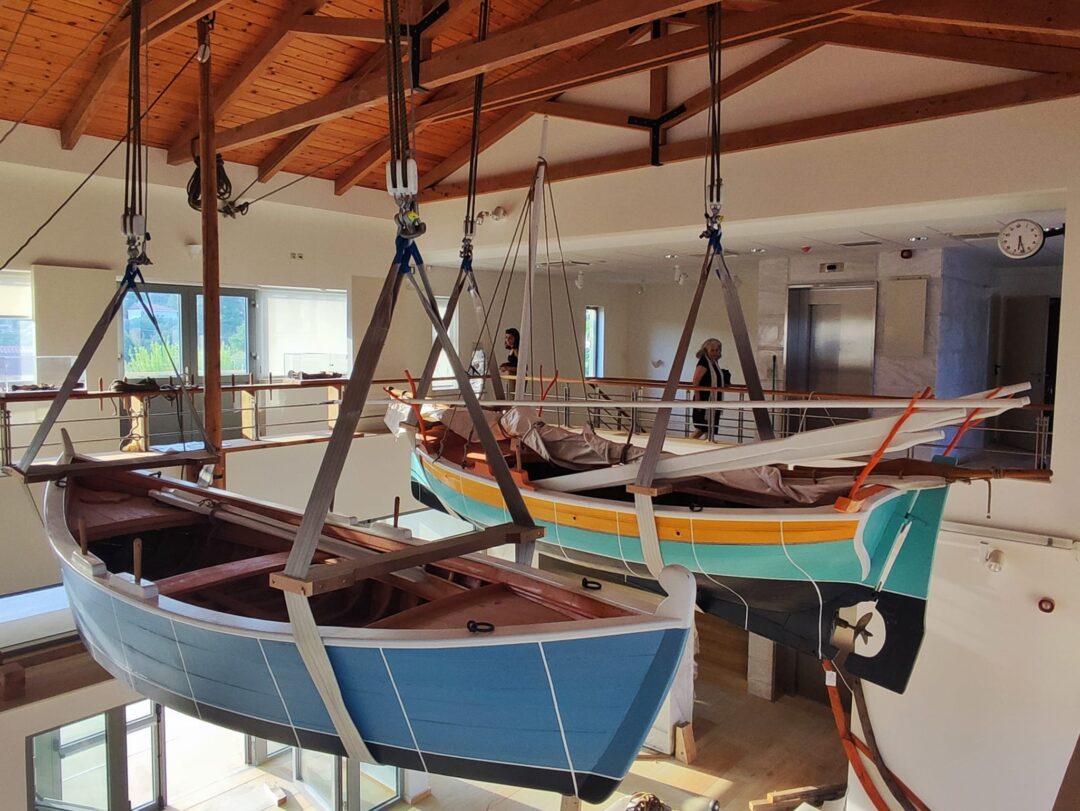
The Museum’s exhibition presents key aspects of maritime craftsmanship as explored through ethnographic studies in the boatyards and ports of the Aegean and archeological research on Aegean shipwrecks. The museum’s design aims to interpret the material remains and the intangible elements of boatbuilding tradition, focusing on the individuals behind the techniques and on the empirically transmitted knowledge, as well as the more technical aspects of boatbuilding.
The museum operates on four functional units in addition to the permanent exhibition. The first unit is focused on rescuing and exhibiting at least 12 types of boats representing the boatbuilding tradition of the Aegean. Traditional shipbuilding tools and over 300 exhibits are also a large part of the collection, which further includes a number of designs, shipbuilding models and molds. Other categories of exhibits include boat accessories, instruments and mechanisms onboard, logbooks and notarial documents, business records and other evidence from Aegean boatyards and shipping companies.
The Museum also preserves items of intangible cultural heritage, such as recorded or videotaped oral testimonies of craftsmen and sailors, archival photographs and film or video material of boatbuilding and maritime activities in the Aegean. The museum’s Archive of Oral includes recordings from 1984 until today from all over Greece and more than 200 interviews-personal testimonies on the life, employment, woodworking techniques, complementary professions, customs, and social practices of the people of the sea.
The museum is part of a wider effort to safeguard the boatbuilding craftsmanship and to permanently cease the subsidized destruction of traditional fishing boats.
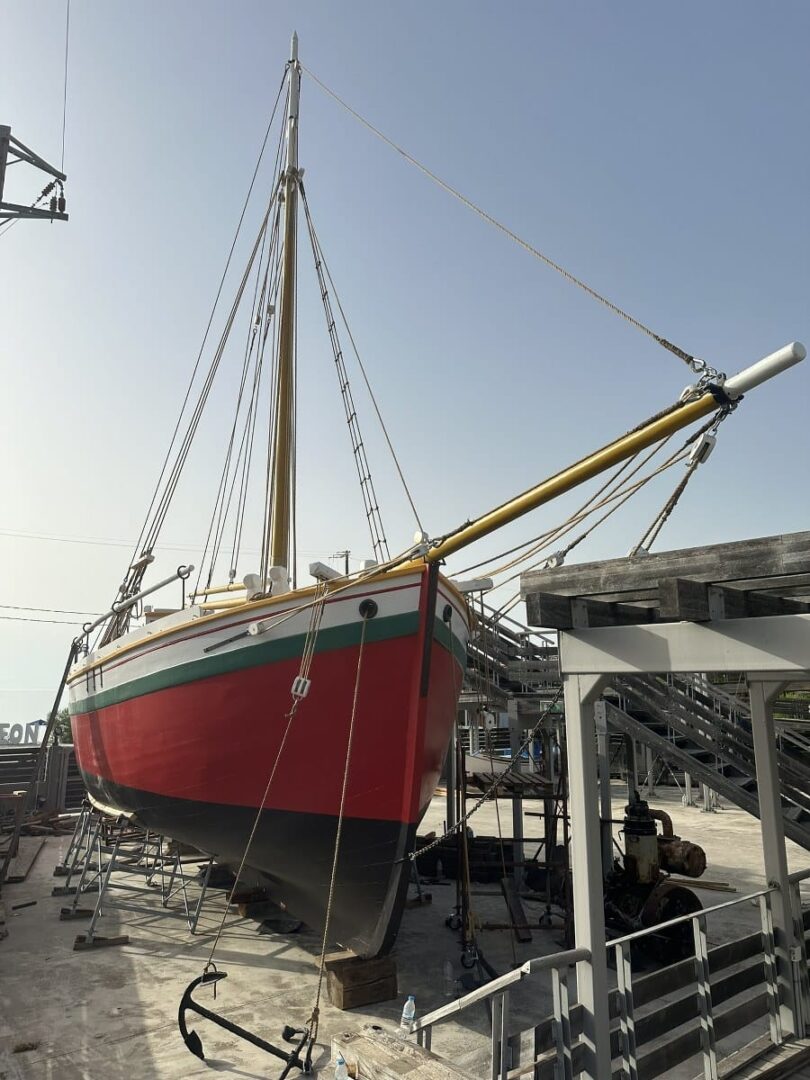
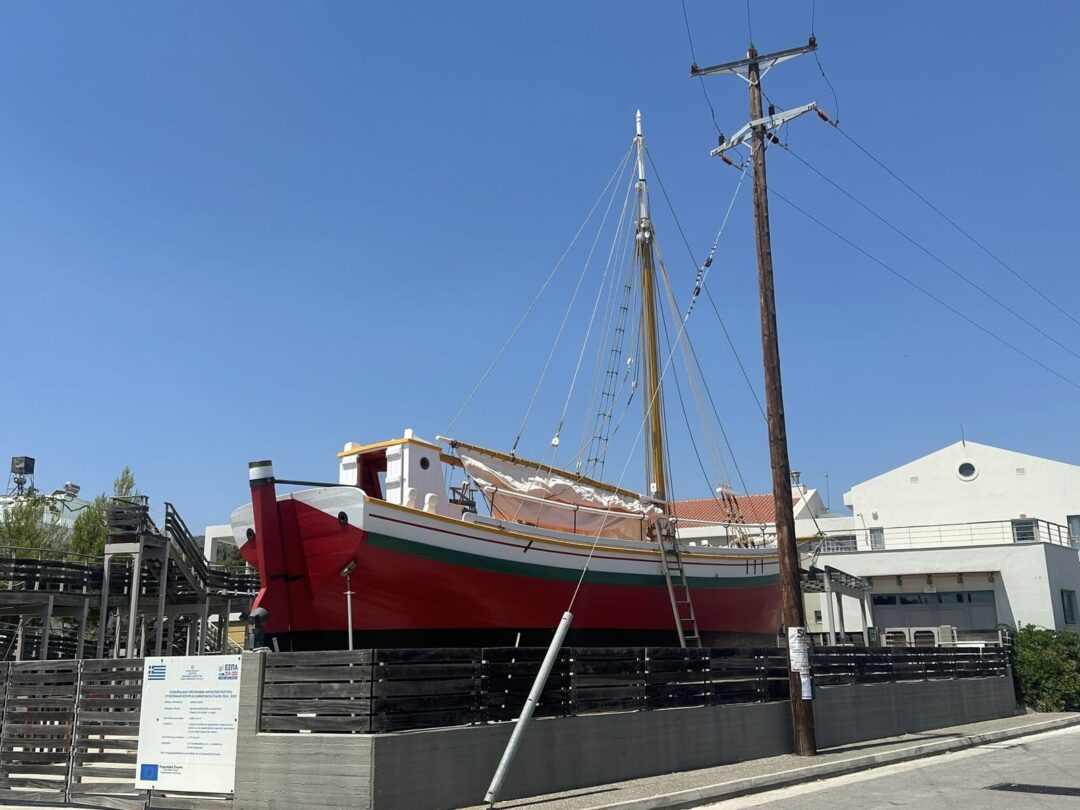
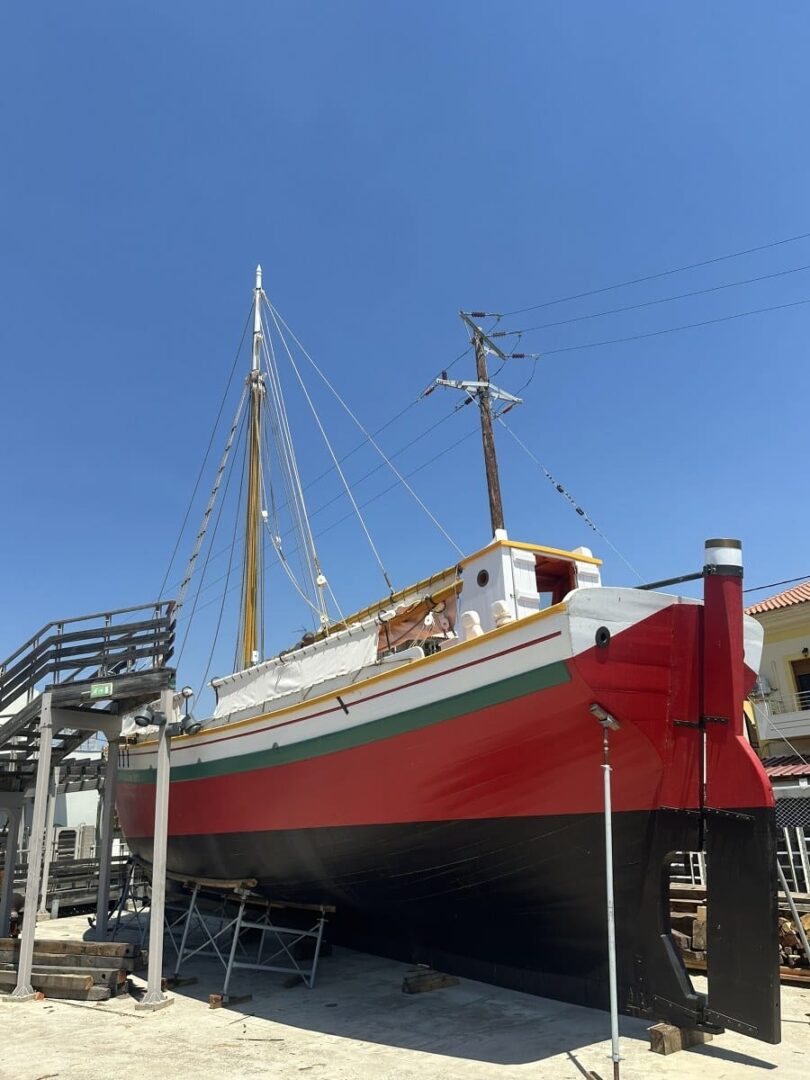
The Vocational Training and Apprenticeship Program in Wooden Boatbuilding
In addition and in close collaboration with to Museum of Aegean Boatbuilding and Maritime Craft, a new Apprenticeship and Vocational Training program will operate in the island Samos. The programs is based on the framework recently established by the Ministry of Education and will be implemented collaboration with the University of the Aegean’s School of Sciences, also based on Samos.
This new boatbuilding educational program will operate from the new academic year (2024-2025) at the Museum of Boatbuilding and Maritime Crafts of the Aegean, with the aim of preserving and developing this inextricably linked to Greek identity craft. The program was presented last December, at the Library of the Aikaterini Laskaridis Foundation, in the presence of the Minister of Culture Lina Mendoni and the Minister of Shipping and Insular Policy Christos Stylianidis.
The program, funded of the Ministry of Culture with the amount of 210,000 euros, includes the pilot operation of an apprenticeship program, the organization and operation of which will be undertaken by the Lifelong Learning Center (KEDIVIM) of the University of the Aegean. The educational program will be of two years duration followed by one year of apprenticeship, in boatyards as at the Museum, especially in the maintenance of the wooden boats on display.
in her speech, minister Mendoni underlined that it is imperative that we establish permanent, multi-year, institutions for apprenticeship and teaching of the craft with a perspective of professional rehabilitation. “There are many examples from other countries, which indicate that wooden boat building based on traditional know-how can emerge as a modern practice, being integrated into sustainable business plans, as well as sustainable local development plans.
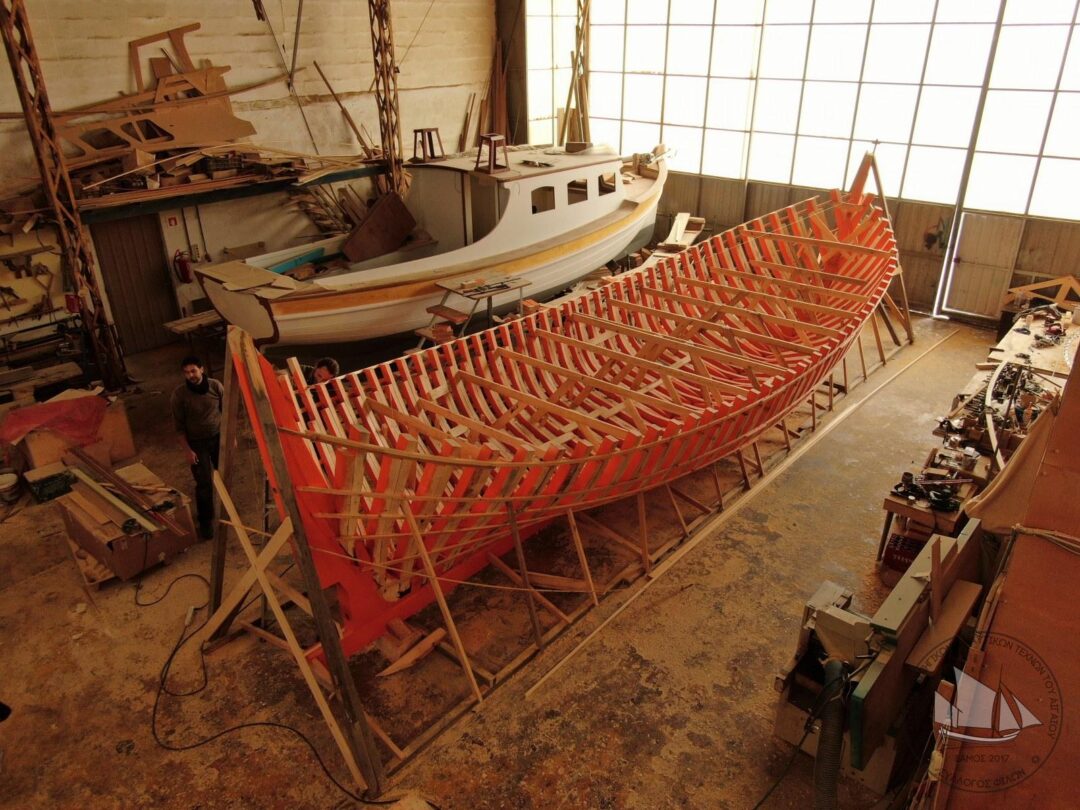
Today, Greek carpenters are carriers of know-how and practices, many of which are links in an ancient chain. Boat Carpentry, one of the great arts of modern Greece, requires special knowledge and a long apprenticeship. However, until now the young could only learn through experiential teaching, alongside the older craftsmen. Our primary goal in harnessing our woodworking heritage is to teach this craft to young people who are interested in it and believe in the value of perpetuating it. However, in order to do this, the economic and social acknowledgment of the wooden boats industry must first be restored,” she explained.
For his part, the Minister of Shipping and Insular Policy Christos Stylianidis emphasized that “the rescue of traditional boats is intertwined with the rescue of the art of shipbuilding itself, and these will save the carnaya and the tarsanades (shipyards)”. Because, as he explained, the traditional shipwright will maintain and repair the existing traditional boats, build new ones and pass on his craft to the next generation. “The wooden boat must remain alive. Either as fishing, tourist or commercial. And the work of the shipwright must be treated as a living art. And not as an art taught in some “elite” workshops, he stated.
Kostas Damianidis, scientific director of the Museum of Aegean Boatbuilding and Maritime Crafts
A few months before the first school of woodworking was opened in Samos, Greek newspaper “Kathimerini” visited Heraio, Samos and spoke with Kostas Damianidis, scientific director of the Museum of Aegean Boatbuilding and Maritime Crafts (MNNTA):
“On the south coast of the island, next to its most important archaeological site, in a quiet seaside settlement stands a building that looks as if it has come from Space. It is a new, state-of-the-art museum that houses a valuable archive of our great national art that is being lost, that of traditional shipbuilding. It is the Museum of Boatbuilding and Maritime Crafts of the Aegean (MNNTA), which is preparing to open its doors soon to show the public precious pieces of tangible and intangible heritage and also to inaugurate an apprenticeship school in woodworking.
There, Kostas Damianidis, scientific director of the new museum, opens the doors to us and offers us a brief tour of its exhibits and facilities. Above our heads, in the lobby of the museum, hang two rigs, one for salt water and one for fresh water, a papadia from the island of Hyrda, and a kurita. Outside the museum, just meters from the shoreline, a scaffolding installation awaits a series of historic exhibit boats, thirteen in all, that have been salvaged or reconstructed in recent years by the museum’s research team.
As Kostas Damianidis tells us, “the biggest bet we want to win with this museum is its parallel and complementary function with the school of Wooden Boatbuilding. This is something that does not exist in Greece – it is rare even abroad.
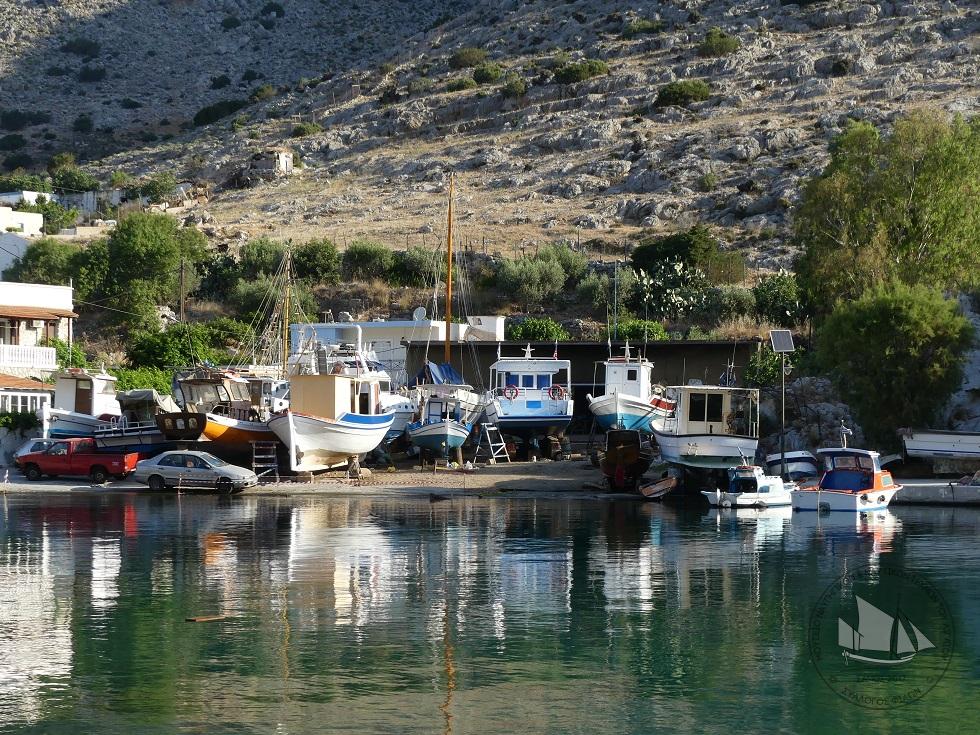
That the life of the museum will be intertwined with the life of the school is an idea that gives a new dimension both to the museum experience and to the context of the education of young people in the craft. It is an approach that is actively supported by the competent department of Culture and we are advancing it together, step by step, together with the University of the Aegean and the Municipality of Eastern Samos. The viability of both the museum and the school will depend a lot on their harmonious coexistence and cooperation.”
“It is a thematic technical museum that is a project of the Municipality of Eastern Samos and is financed by the operational program “Competitiveness, Entrepreneurship and Innovation 2014-2020”, says the mayor of Eastern Samos Paris Papageorgiou to “Kathimerini”. The goal is, as the mayor says, for the museum and the school to open during the 2024-2025 school year, as part of a program funded by the Ministry of Education. “The school is expected to offer two years of study and an additional year of apprenticeship alongside an experienced craftsman, in a shipyard anywhere in the country.”
For his part, Kostas Damianidis states that he has no illusions: “I know that out of the 15 apprentices each year, only one or two will go to work in this field. But, with today’s conditions, even two people every year becoming professional shipwrights in boatmaking, this will give a great breath of life to the field.”
His optimism is also based on the new trends inspired by the threat of climate change: “Woodworking, among its various benefits, also contributes to the proper management of forests, since they must be felled in the right way in order for them to survive, but also to protect them from fire. In addition, a wooden boat has a lifespan of about the same as plastic, but its recycling is environmentally friendly. A plastic boat has materials that are not recycled – even burning it is poisonous. So, in my opinion, the production of wooden boats should also be supported institutionally.
And, of course, there is the obvious acknowledgment that the wooden boat is a valuable piece of cultural heritage that we should save in our seas. Throughout time, boats have always been something very attractive, even for the tourism that concerns us so much – just for the image of our landscapes themselves. Our wooden boats are a quality feature of our islands built and man-made environment.””
I.L., with information from Woodenboats.gr, Kathimerini and the Ministry of Culture; all photos from Woodenboats.gr and their Facebook page
TAGS: AEGEAN | HERITAGE | MODERN GREEK HISTORY | SHIPPING

